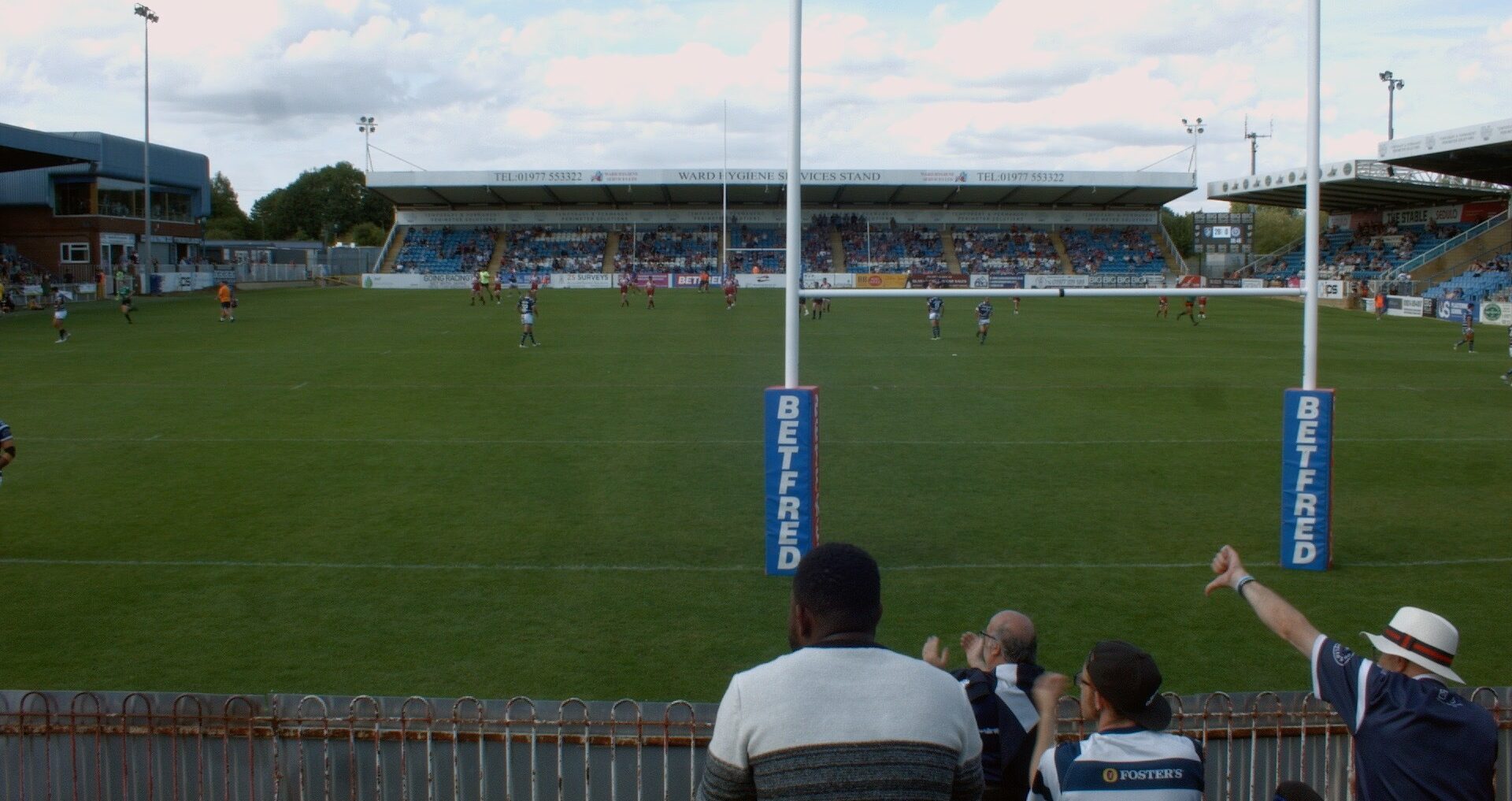It must have taken a lot for Boris Johnson — onetime Eton prop-forward; archetypal rugby union boy — to go begging for the votes of those who play rugby league. But as Britain went to the polls in 2019, Johnson knew that he had to do something remarkable to “Get Brexit Done”. All great election winners have conquered parts of the country that are not their natural homes: Attlee with the Home Counties; Thatcher with “Essex Man”; Blair with Middle England. While these winners looked south, Johnson went north.
For supporters of rugby league — a game associated not with public schools but the towns of the post-industrial North — the arrival of the Conservative Party into its territory was a surprise. League had always been part of a working-class culture which was intrinsically Labour, played out across the coalfields of Lancashire and Yorkshire, in the weapon and shipbuilding plants of Cumbria and by the docks of Humberside. But when Brexit proved to be a reckoning for those areas, with the Conservatives vowing to see it through, the sport was inevitably drawn in.
This is how we ended up with Ann Widdecombe addressing a Labour club in the rugby-league heartland of Featherstone in early 2019. In an ex-mining town that had once looked to Arthur Scargill, she won cheers for attacking the “traitors in parliament” and the “bureaucrats in Brussels”. The only boos came when anyone mentioned the prospect of a “second referendum”. It was part of a political sea change. Featherstone’s MP, Jon Trickett, was one of the lucky survivors of the collapse of the Red Wall in 2019. But the gradual decline in his vote share over recent decades emphasises the disconnect between the party and the people. In 1997, Trickett won over 70% of the vote, making it a rock-solid New Labour area. By contrast, in 2019 his share was down to just 37%.
Labour politicians can no longer afford to take those voters for granted. Lisa Nandy, who represents another ex-mining rugby league town in Wigan, has since made the connection between sport and her constituents’ sense of place. In her book All In, she notes how almost every Labour club in Wigan has been demolished, how the once-beloved ground, Central Park, is now a Tesco.
For all the changes to society, however, rugby league stands firm in those areas as a focal point for working-class communities to come together. Despite operating in an ever harder financial climate, clubs remain the place where identities are forged, and community cohesion is harnessed. When Covid-19 hit, for instance, it was the clubs that were at the forefront of the organisational response — from co-ordinating welfare checks and running foodbanks to raising money for NHS services. When the Johnson Government ensured the game had a loan to keep operating when the doors were closed, Oliver Dowden said it was because “it has been the social glue holding communities together”.
If there is one area that symbolises the historic importance of a team to a community then it is Featherstone Rovers. Often described as just a “set of traffic lights on the road from Wakefield to Pontefract”, the club has prided itself on punching above its weight by producing generations of international players — the likes of Jimmy Thompson, Paul Newlove and Zak Hardaker. For much of the 20th century, players did the same jobs, drank in the same pubs, lived on the same streets, and sent their kids to the same schools as the supporters who idolised them on the terraces. When a group of sociologists visited the area for the study Coal is Our Life, rugby league was judged alongside the pub and the cinema to be “the only institution bringing large numbers of people together”.
This organic community began to dissolve in the Eighties. Any town that was linked to coal-mining was hammered when the pit closure plan was initiated, and, during the miners’ strike, Featherstone became emblematic of the turmoil that was engulfing the region. League players picketed by day while those working in other industries were stopped and interrogated by the police as they went about their daily business. Wives of miners stopped fundraising for the club and started supporting each other instead. Rovers let striking miners in for free on the assumption that they would reimburse them when they were back at work. But the pits never did reopen. The community was broken up and people took on new jobs as labourers and taxi drivers. The local historian Ian Clayton watched on as a succession of building societies and well-established businesses were boarded up and broken into. Crime, which had never been a factor in the town’s day-to-day life, increased. “For the first time to my knowledge, I’ve known Featherstone folk pinching off one another,” Clayton wrote.
At the same time, rugby league looked set to abandon Featherstone, too. The sport’s attempt to come to terms with the settlement of the Eighties was the plan, fuelled by a mega broadcasting deal with BSkyB, to merge small clubs together and expand into the cities. “We have 35 clubs in terrible little, tiny areas all competing to get the same sponsors, the same people through the turnstiles, the same players,” argued Maurice Lindsay, who spearheaded the move. “Nostalgia”, he concluded, “does not pay the bills.” For the “expansionists” who wanted the game to grow and move into the cities, teams such as Featherstone were symbolic of the league’s parochialism and the “cloth cap” image that it wanted to distance itself from. A profitable future for the sport would come through big money and big media.

Lindsay tellingly likened it to Nigel Lawson’s financial “big bang”, allowing clubs to amalgamate like banks and building societies had. Others saw it as an attempt to change the image of the game. The veteran rugby league journalist Paul Fitzpatrick wrote that the sport could not hope to survive when it was “played in dumps and against a background of stark poverty”. But, in 1995, when Featherstone supporters were told that their club would merge with neighbours Castleford and Wakefield (to become Calder), it stirred deep emotions within them.
The resistance to the mergers was soon framed as a battle between the people and the elite. Supporters made protest signs — “Bought and Sold for Murdoch’s Gold,” read one — and came together in community halls and Labour clubs to orchestrate a campaign of protest. One, speaking at an anti-Calder meeting, declared rugby league is not a “commodity to be bought and sold by billionaires”. The “expansionists” framed the opponents as reactionaries who were unable to see how society and the marketplace around sports was changing. But revisiting those debates today, it is clear that the battle to conserve those identities was not just about the past. It was also about the future. For all that had been lost during the Eighties, there was hope that, through rugby league, their areas could one day be part of the national story again.
So, when Ian Clayton was invited on to the BBC to debate the mergers, he dreamed that “one day a woman would wake up in Toulouse one morning and turn round to her husband and say, ‘Do you fancy a weekend in Featherstone?’” His campaign even printed T-shirts which emphasised this philosophy, urging people to “Think Global – Act Local”. But due to the huge fan pressure, the rugby league mergers never happened. Instead, dreams of global expansion were traded for the preservation of heritage, and league continues to serve the same working-class communities that formed the game over 125 years ago. It was the same lesson that football learned when they tried to instigate the European Super League in 2021: when faced with a direct choice between cash and community, fans will pick community every time.
It’s a sporting simulacrum for the vote to leave the European Union. But, just as with Brexit, there is a clear economic trade-off when you focus on the local rather than the global market. Today, league clubs remain community assets but are increasingly irrelevant on the national stage. In the fierce battle to secure sponsorship and TV revenue, league increasingly arrives at the table with a weak hand. While the organisers of the Rugby World Cup forecasts that it will make €45 million this year, the league equivalent, hosted in England last autumn, failed to drum up much public interest. Had it not been subsidised by the British taxpayer it would have run at a significant loss.
The lack of funds at the top of the game means that the sport is always battling for survival. Just last month in Featherstone, the local amateur club, the Lions, who run junior clubs, put out an appeal to raise money to fix craters and potholes, as well as rebuild their toilets and showers. The organiser admits that “the last thing our kids and wider community need is for our club to close due to financial reasons”. For now though, Featherstone on a matchday remains a place where the community can come together. It is the place where ex-players can meet in the clubhouse and reminisce about the “good old days”; where young people can sit, vape, and hang out together; where new parents can park their prams and let their children play.
As Britain navigates its post-Brexit landscape, the dilemma facing rugby league is not too dissimilar to the one facing our politicians. How can areas protect those community assets in an economy that has been dependent on market forces for so long? Brexit and the 2019 election put places such as Featherstone at the centre of the debate about Britain’s future and its identity. As we struggle to adapt to our new era, their communal spirit, powered by rugby league, might once again hold the key.
Disclaimer
Some of the posts we share are controversial and we do not necessarily agree with them in the whole extend. Sometimes we agree with the content or part of it but we do not agree with the narration or language. Nevertheless we find them somehow interesting, valuable and/or informative or we share them, because we strongly believe in freedom of speech, free press and journalism. We strongly encourage you to have a critical approach to all the content, do your own research and analysis to build your own opinion.
We would be glad to have your feedback.
Source: UnHerd Read the original article here: https://unherd.com/



